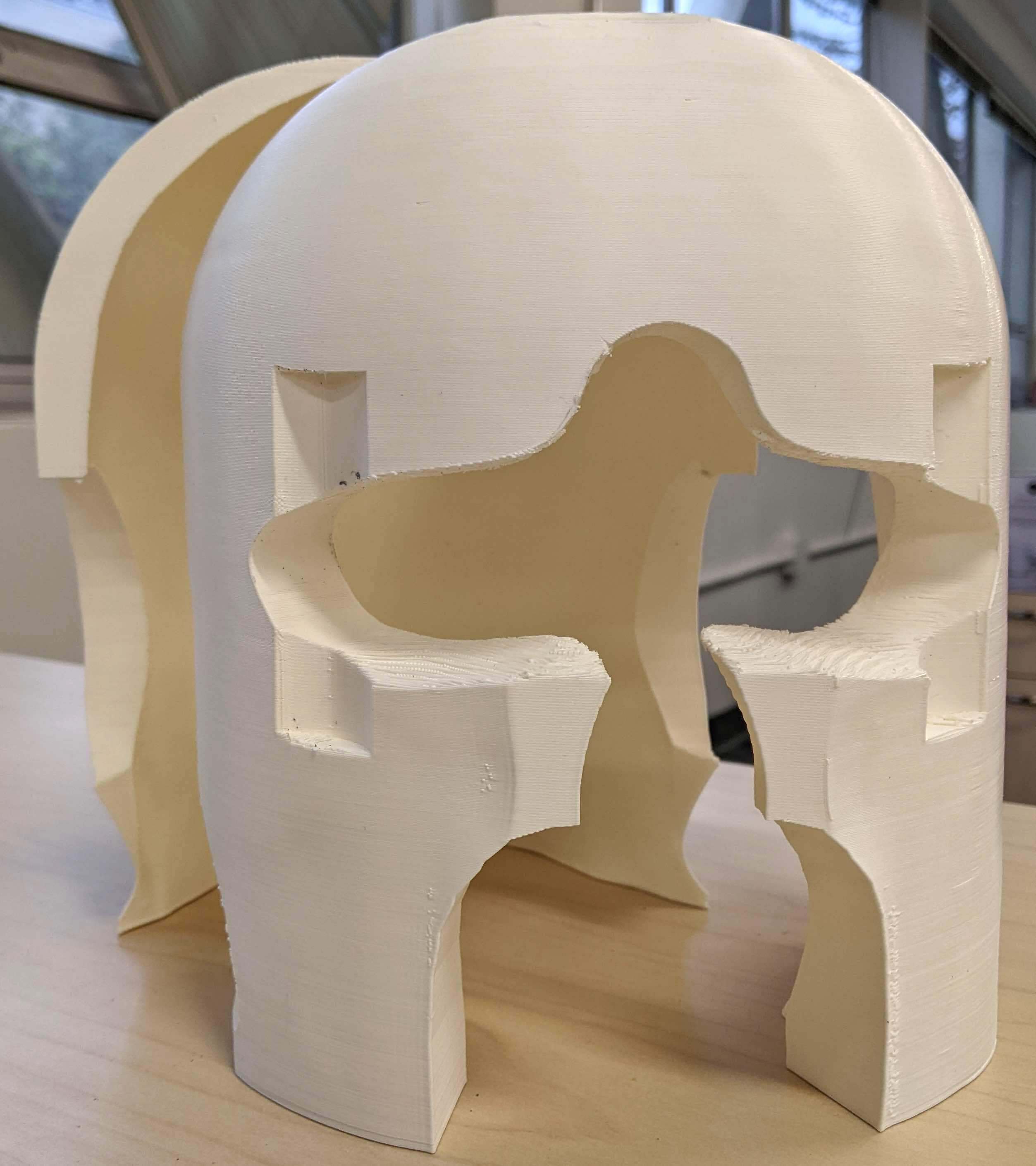Headcases reduce subject motion (Power et al., 2019), increase subject's comfort, and facilitate consistent head positioning across multiple scanning sessions.
The pipeline takes as an input a 3D model of the participant's head and generates STL files of the headcases for 3D printing. This pipeline has been tested only with a Structure Sensor, but we think other sensors may be used.
Headcases can be generated for the following head coils: Siemens 32ch, Siemens 64ch, and Nova 32ch.
The pipeline is written in Python and uses MeshLab and Blender.
The basic Structure Scanner iOS app can be used to scan a 3D model of the participant's head. For recommendations on how to scan the participant's head, see this document. From the Scanner app, the 3D model file (Model.zip) will need to be sent to an email address.
The pipeline can then be used to generate a headcase with
python make_headcase.py Model.zip Headcase.zip --headcoil s32Several options are available, including whether the headcase should be split in two parts (front and back) or in four parts (front-top, front-bottom, back-top, back-bottom). Four parts (the default) can be printed more easily on most 3D printers, but they might require gluing together the top and bottom parts. To see all options, run
python make_headcases.py --helpThe automatic pipeline should work well in most cases. However, if it's necessary to manually tune the alignment of the head model, it's possible to specify a working directory.
python make_headcases.py --workdir /path/to/workdir Model.zip Headcase.zip --headcoil s32In this case, the intermediate files will be stored in the working directory and not deleted at the end. The intermediate files are
01cleaned.plyfor the cleaned head model, and02aligned.stlfor the aligned head model
To manually refine the alignment, 02aligned.stl can be loaded in blender with the desired headcase model (stored under the stls directory of this repository).
Finally, the headcase can be generated with
python make_headcases.py --headcoil s32 --generate-headcase-only /path/to/workdir/02aligned.stl Headcase.zipWe recommend running the pipeline with the Dockerfile provided in this repository.
First, the docker image needs to be built.
docker build --tag caseforge .Then, the pipeline can be run with
docker run --rm caseforge:latest --helpTo let docker see the folder containing the head 3D model, you will have to bind the folder inside the container. For example, if the head model is in /tmp/test-headcase/model.zip, the following command should be run
docker run --user=$(id -u):$(id -g) -v /tmp:/tmp -t --rm caseforge:latest \
/tmp/test-headcase/model.zip \
/tmp/test-headcase/case.zipNote that the flag --user=$(id -u):$(id -g) is optional, and it is used to ensure that the generated zip file will have the same file ownership and permissions as your user (rather than the root user).
To run the pipeline on an ARM system such as a Mac with M1/M2/M3 chip, you need to pass the --platform linux/amd64 flag to all docker calls (see this stackoverflow question).
To build the docker image, run
docker build --platform linux/amd64 --tag caseforge .To run the pipeline, use
docker run --platform linux/amd64 --rm caseforge:latest --helpPython requirements are listed under requirements.txt, and can be installed with
pip install -r requirements.txtWe also provide a conda environment file. The environment was created on Ubuntu, so it might not work on other operating systems. The environment can be installed with
conda env create -f conda-environment.yml --name headcaseThe pipeline also requires
- Blender 2.7.9 (Do not use newer versions of Blender, or the pipeline won't work.)
- MeshLab, any version prior to 2022.02
- The participant's head is not aligned correctly inside the headcase (turned upside down, flipped front-back, etc.): this problem can be caused by a 3D model that covers too much of the participant's shoulders. To solve this problem, the head model can be modified in MeshLab or Blender to remove the shoulders. Alternatively, the participant's head can be scanned again with a tighter bounding box only around the head. Please refer to the scanning recommendations for examples of the bounding box.
- The participant reports that the headcase is too tight, especially on the cheeckbones: this is a known problem that can occur for some participants. We are currently working on a solution for this problem. A potential solution is to increase the amount of expansion of the head model by passing a higher value to the
--expand-head-modelparameter. Please refer to the help message ofmake_headcase.pyfor more information.
To get help or report problems, please open an issue on this github repository.
